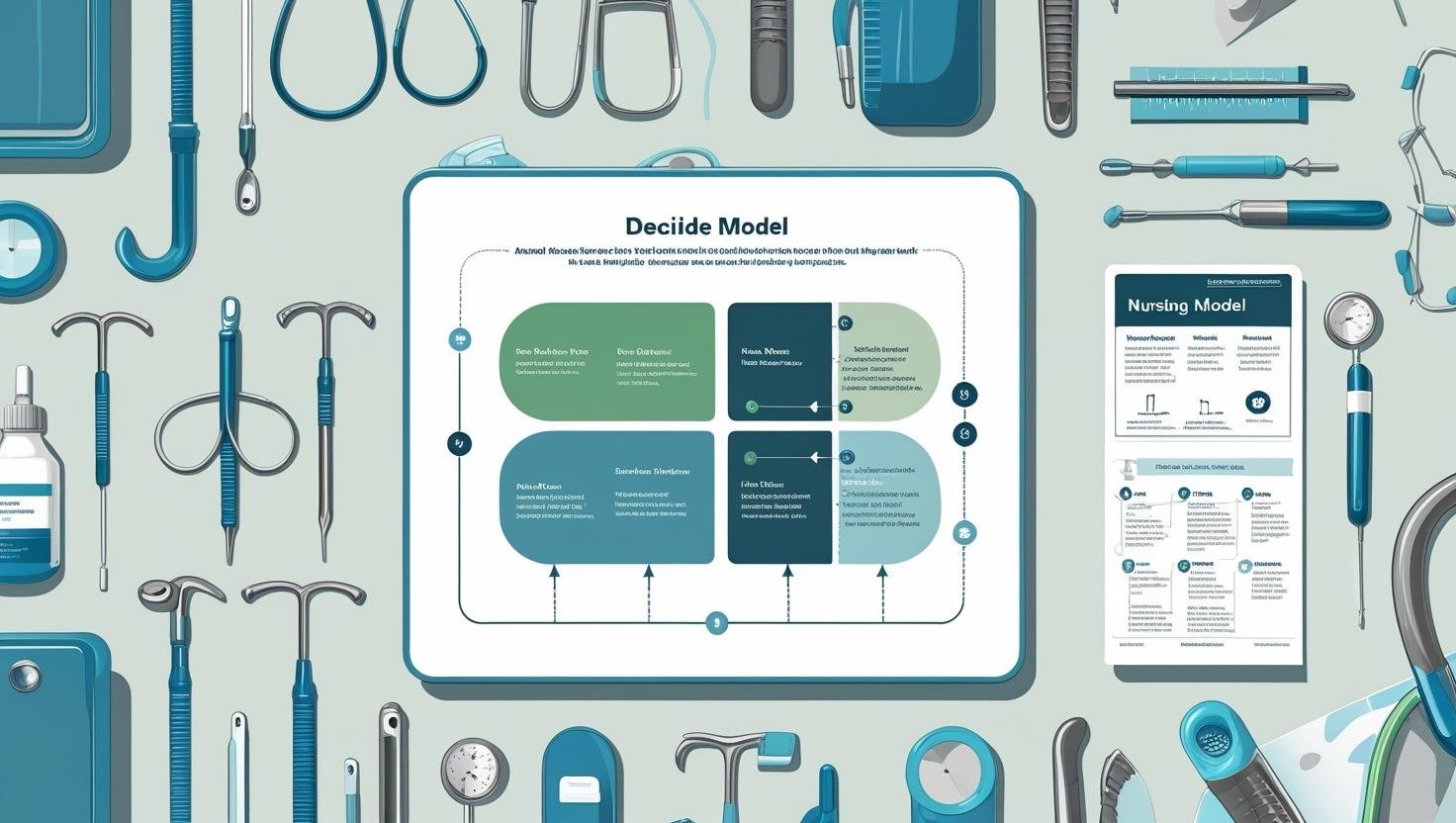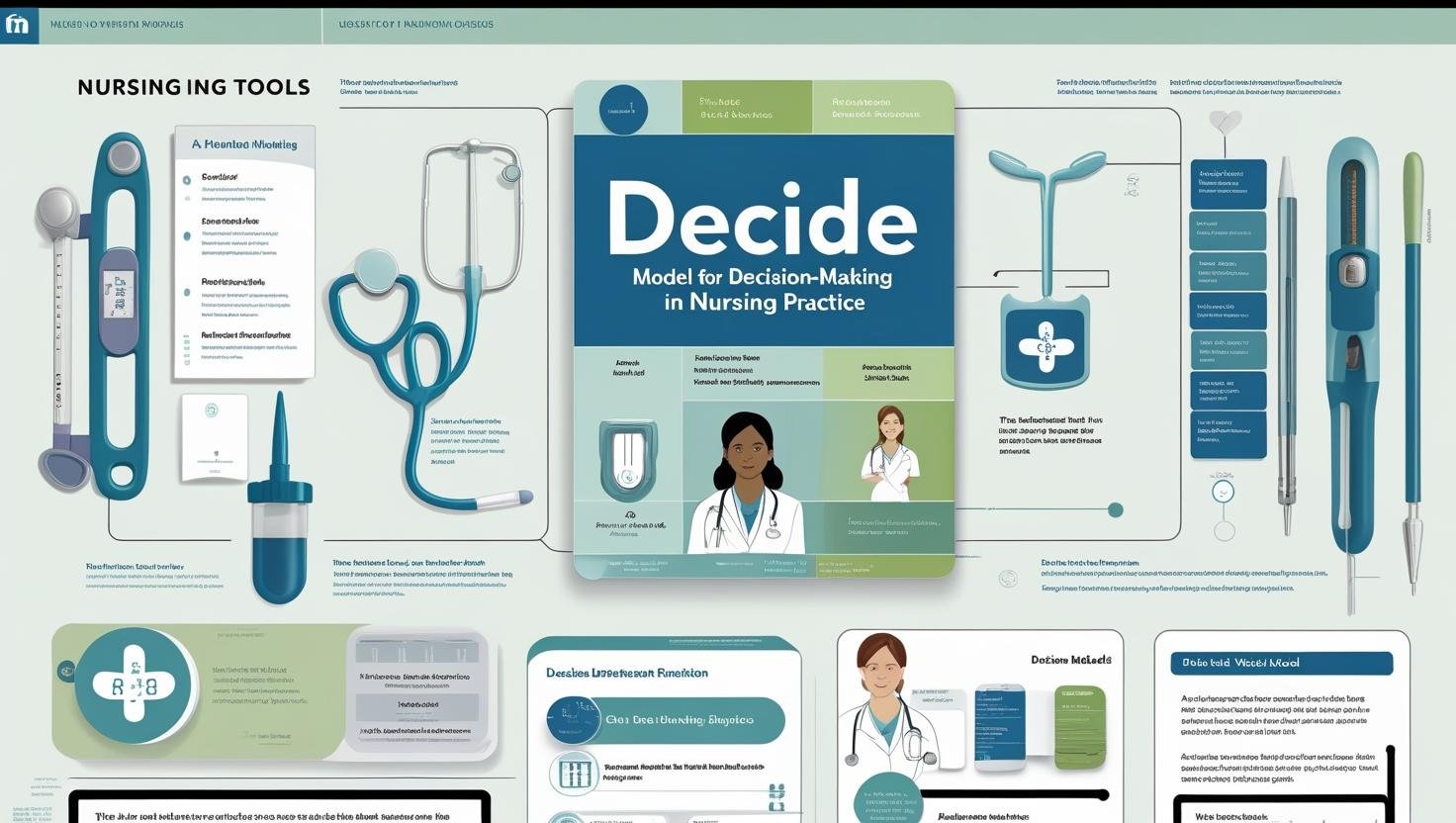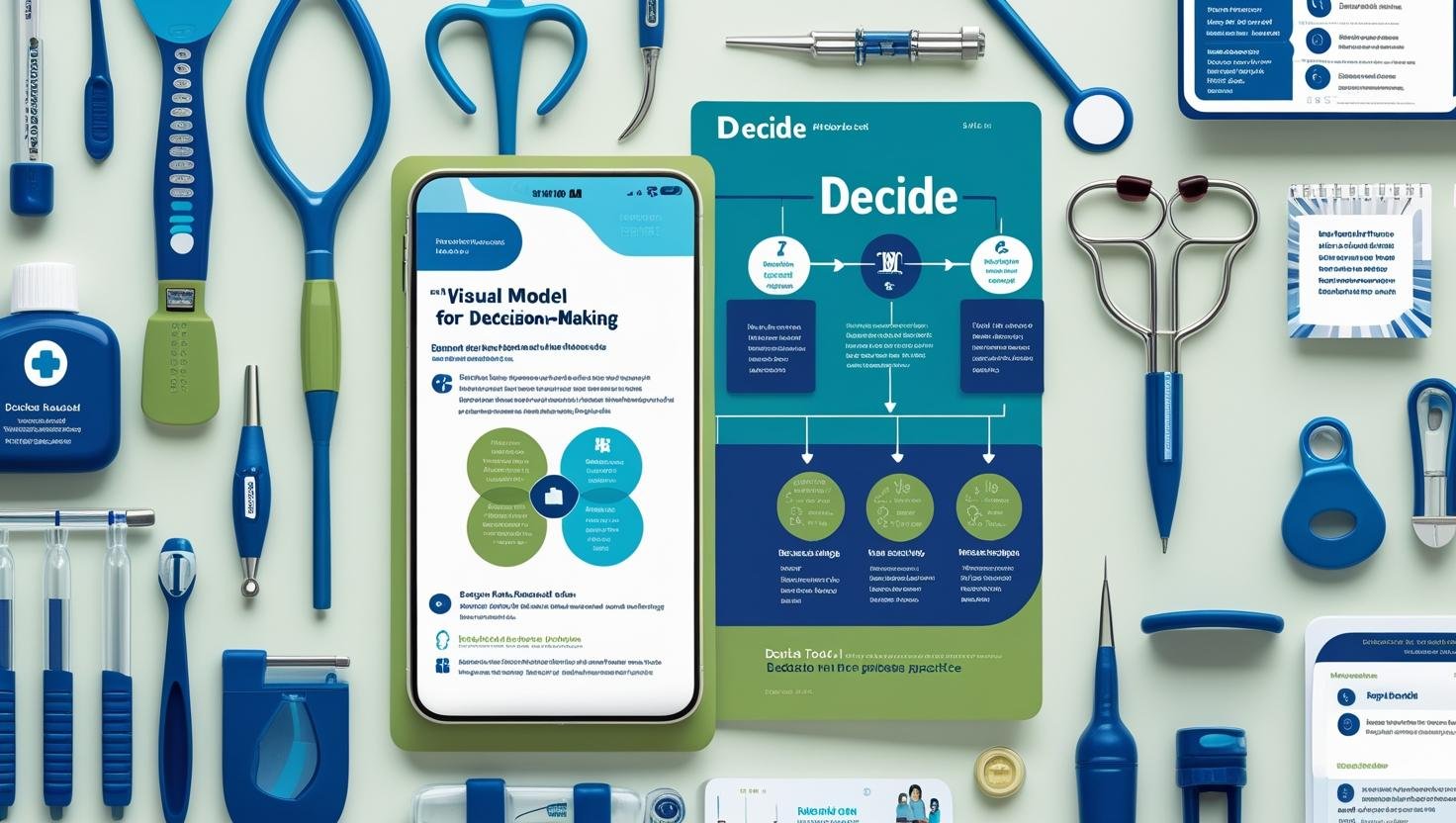The Tools and DECIDE Model for Decision Making In Nursing Practice. The steps in the rational decision model are: problem definition, identification of decision criteria, weighting of criteria, development of alternative solutions, evaluation of alternatives, selection of a solution, and its implementation.
What are Tools and DECIDE Model for Decision Making In Nursing Practice
The DECIDE model is a useful framework for decision-making in nursing practice. It helps nurses systematically analyze situations, weigh options, and make informed decisions. The model includes defining the problem, establishing criteria, considering alternatives, determining the best option, developing a plan of action, and evaluating outcomes.
Clinical decision support tools, also known as point-of-care diagnostic tools, are digital resources that assist healthcare professionals in making informed clinical decisions during patient care.
The nursing process serves as a systematic guide for patient-centered care, with five sequential steps: assessment, diagnosis, planning, implementation, and evaluation. Assessment is the first step and involves critical thinking and the collection of subjective and objective data.
The DECIDE model is the acronym for six specific activities required in the decision-making process:
- D = problem definition
- E = criteria definition
- C = consideration of all alternatives
- I = identification of the best alternative
- D = development and implementation of an action plan
- E = evaluation and monitoring.
Tools for Decision Making
Tools for decision making provide nurse leaders and managers a systematic way to collect and manage necessary data and assist in visualizing alternatives. There are numerous tools and techniques available that can be used to ensure effective decision making. By using a tool for decision making, nurse leaders and managers can approach decision making in an organized and systematic manner.
DECIDE Model
Using a decision-making model can help ensure that all steps of decision making are addressed, thereby avoiding jumping to a conclusion before all information is collected and analyzed. A model for decision making identified by Guo (2008) uses the acronym DECIDE to represent the steps in the decision-making process.
Decision-Making Grid Analysis
Decision-making grid analysis is one of the simplest tools a nurse leader and manager can use, especially if the decision involves more than one feasible alternative. This technique involves listing options and factors on a table or grid. The possible options or alternatives are listed on the rows of the table, and factors impacting the decision are listed on the columns. Next, a numerical score (e.g., in a range of 0 to 3) is assigned to each option to indicate poor to very good or not likely to very likely; it is acceptable to use the same score more than once.
For example, a nurse manager is determining which shift would be best for a particular unit. Options or alternatives include 12-hour shifts, 10-hour shifts, and 8-hour shifts. Next, factors to consider are determined by the nurse manager with staff input and are based on evidence. Factors to be considered in this case are nurse satisfaction, nurse fatigue, patient satisfaction, and potential for adverse events.
Then, the nurse manager assigns weights first to each option and then to each factor based on importance, with 0 being the least important and 3 being the most important. The weights for each option are multiplied by the weights assigned to the factors for a total. The option with the highest total becomes the most feasible option.
SWOT Analysis
A SWOT analysis is a tool frequently used in marketing and organizational strategic planning. However, it can also be very useful in decision making for nurses. SWOT stands for Strengths, Weaknesses, Opportunities, and Threats. Strengths and weak nesses are internal factors, or those within the organization or the unit, whereas opportunities and threats are seen as external factors, or those outside the organization or unit (Pearce, 2007).
Nurse leaders and managers who make decisions using a SWOT analysis can improve outcomes for both patients and nurses by identifying the strengths and weaknesses of the staff, areas for improvement, and opportunities for facilitating positive change (Roussel, 2013).
Read More:
https://nurseseducator.com/didactic-and-dialectic-teaching-rationale-for-team-based-learning/
https://nurseseducator.com/high-fidelity-simulation-use-in-nursing-education/
First NCLEX Exam Center In Pakistan From Lahore (Mall of Lahore) to the Global Nursing
Categories of Journals: W, X, Y and Z Category Journal In Nursing Education
AI in Healthcare Content Creation: A Double-Edged Sword and Scary
Social Links:
https://www.facebook.com/nurseseducator/
https://www.instagram.com/nurseseducator/
https://www.pinterest.com/NursesEducator/
https://www.linkedin.com/in/nurseseducator/
https://www.researchgate.net/profile/Afza-Lal-Din
https://scholar.google.com/citations?hl=en&user=F0XY9vQAAAAJ


